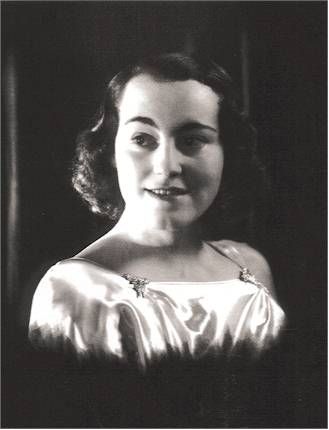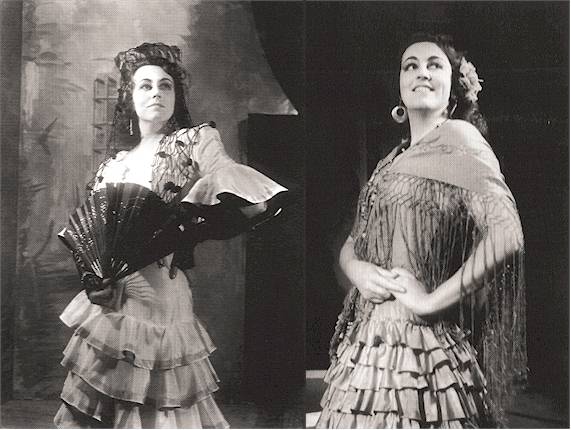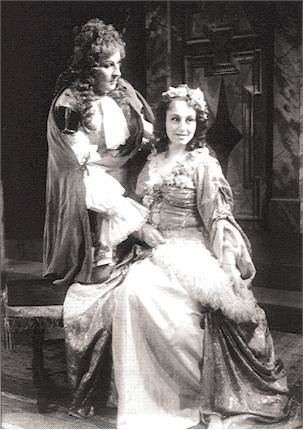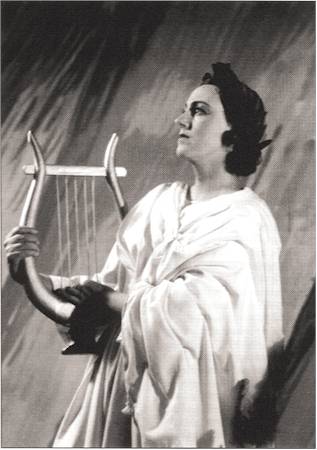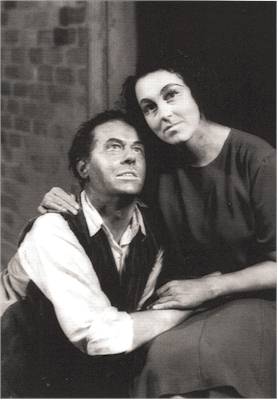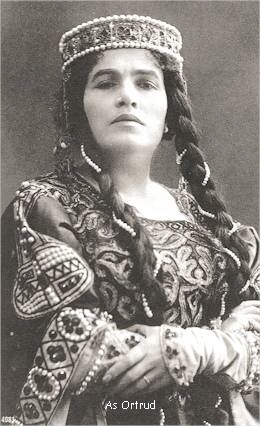Danish mezzo-soprano, 1908 - 1995
Biographical notes: She was born into a family of musicians. Her grandfather was an organist and composer, her
uncle a French-horn player, her mother was a trained pianist. Her father, originally a clarinettist, was gifted with a fine singing voice, and in 1913 he made his début as a romance singer. He
became an ardent promoter of the compositions of the time (Nielsen, Laub, Gade). He also was a highly respected teacher, and it was with him his daughter Else studied. When she was 17, her father brought her to Mattia Battistini (!) and the baritone was enthusiastic in his praise for the
young singer’s talent. Subsequently, she went to Paris for a four month’s stay to study the French repertory (with Georges Cunelli and Povla Frijsh) and it was here that her lifelong love affair
with French music started. At the age of 20 she made her début in a small concert hall at Copenhagen. She went for further studies to Mme Charles Cahier (the American contralto and
famous interpreter of Carmen taught in Berlin), and later Else Brems returned to Paris. At 21, she made her first appearance at the Royal Theatre Copenhagen as Carmen. Her conductors in the
piece included Leo Blech in the first year. It was with this role she made tremendous progress. She appeared as Carmen in Vienna, Warsaw, Budapest, Stockholm and London (in English) within
a short time. With few short breaks, Else Brems was concentrated to The Royal Theatre Copenhagen from her début in 1930 until 1962. In 1933 she went on a tour in the United States
and appeared with the Chicago Symphony Orchestra, singing arias by Gluck, Saint-Saëns and Bizet. Her performances were reviewed with enthusiasm. Her voice was even compared with the young Ernestine Schumann-Heink. Despite her success she was not given many parts back home in Copenhagen, and in 1937 she travelled to New York to study with Beniamino Gigli’s teacher,
Enrico Rosati. In 1938 she was engaged as Carmen for the Vienna State Opera by Bruno Walter and Carl Ebert. Her partners included Theodor Mazaroff and Jan Kiepura. In 1940 she married
the tenor Stefan Islandi with whom she frequently appeared together in concerts. During the war she toured the Scandinavian countries and after the war, in 1948, she reappeared as Carmen at
Covent Garden. In 1946 she was appointed “Court Singer”, in 1950 “Honorary Artist”, among many other decorations. From 1967 to 1978 Else Brems was a highly respected singing coach (Elisabeth
Meyer-Topsoe was among her students).
As Carmen - a role ideally suited to her “Ihre Darstellung der Carmen hat mit der landläufigen Carmen-Koketterie nichts gemein. Keine dämonisch rollenden Augen, keine aggressiven Nuancen. Aber ihr ganzes Wesen strömt Verführung aus, und ihre feinfühlige Kunst sublimiert naturhaftes Temperament und vitale Sinnlichkeit.” Heinrich Kralik, Vienna 1938
In the title role of Ebbe Hamerik’s “Marie Grubbe” (with Henry Skaer)
As Orfeo Comment: It was not until 1998 when I heard of Else Brems. I was immediately full of praise for this
outstanding artist. Time and again I am enthused by her ability “to sing with the heart”. I admire her voice with its special timbre, her wonderful mezza voce and her portamento singing (an art
almost forgotten today). She was an eminent opera singer as well as a gifted lieder and oratorio singer (in Danish, German and French). On the invaluable Danacord release you will hear an artist and musician
- and above all - a singer who had a completely devoted attitude to music and words (in this, she reminds me of Kathleen Ferrier and Alexander Kipnis). Her voice was described as “a well-focused, smooth, lyrical mezzo with a special timbre of its own
. Its range, however, was never fully developed despite her very thorough training. The reason for this may perhaps be looked for in her rather introvert personality which did not
accord with the extrovert “here-I-am” attitude, often connected with the extremely high register. Thus the grand mezzo parts in Verdi, Wagner, and Strauss were outside her domain. Her voice
had a soft, lyrical timbre, and she wisely refrained from tackling parts like that of Amneris among others [...]. At the end of Carmen’s Seguidilla she just touched the high B [...]. The high G
sharp was her upper limit [...]. She knew her own limitations, but within these limits she knew how to spellbind an audience, how to work wonders with her voice.”
Prof. Nils Schiorring wrote the following: “The secret behind the transmission of this art [...] is, of course, in the first place to comprehend the psyche out of which it was created; few can do
this; add to this the ability to suppress one’s own feelings under a glittering, multi-colored but often glassily noncommittal surface. Then, and not till then will the artistic fire flare up with
brightest flame. Else Brems masters this. She, like most other human beings, knows and understands the passions which move the human heart. At the same time she is reticent, perhaps
even afraid, of being swept along by the current of emotions which threaten to overwhelm. Therefore she finds herself particularly at home with an art form which demands reticence as a
cover for turbulent feelings. An art form which will only yield the essence of what poet and composer conceived when there is a glow of feeling behind the glassy surface.”
To me, these words characterize the very essence of Else Brems’ art. In addition, I would like to mention her achievements in French music (Carmen, Dalila, songs by Ravel and Debussy), in which
she equalls the very best French singers.
As Bess (with Einar Norby as Porgy). The first European performance of Gershwin’s “Porgy and Bess” took place during the German occupation at Copenhagen, in 1943 (!). Else Brems was the first non-black Bess. There is a stunning excerpt on Danacord.
Mme Charles Cahier (1870 - 1951)
One of Else Brems’ teachers with whom she studied the role of Carmen
|
||||||||||||||||
